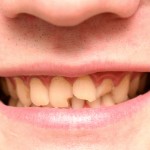
The mouth occupies around 1% of the total body area but accounts for 5% of all body injuries. Uncomplicated crown fractures are the most common injuries with crown fracture involving the pulp being reported in up to 34% of all traumatic dental injuries. Pulp survival in complex crown fractures has been reported to range between 32-94%.
The aim of this review was to assess factors related to pulp survival after tooth fracture.
Methods
A protocol for the review was registered in the Open Science Framework and searches were conducted in the Medline/PubMed, Cochrane Central, Cochrane database of systematic reviews, Scopus, ClinicalTrials.gov, Open Grey, and ISRCTN databases. Randomised controlled trials (RCTs), prospective clinical trials, and cohort and case-control studies in patients undergoing vital pulp treatment in both mature and immature teeth after complicated crown fractures were considered. Two reviewers independently selected studies and extracted data. Risk of bias in RCTs was assessed using the Cochrane RoB tool 2.0 and other studies using the Risk of Bias in Nonrandomized Studies of Interventions (ROBINS-I) tool Meta-analyses were conducted where applicable with the Grading of Recommendations Assessment, Development, and Evaluation (GRADE) approach being used to assess the certainty of evidence.
Results
- 24 studies (4 RCTs, 6 prospective cohort studies, 12 retrospective cohorts, and 2 case-control studies) were included.
- 17 studies involved both mature and immature teeth and 6 studies only immature teeth
- Sample sizes ranged from 9 to 375 teeth in patients between 8.3 to 20.7 years of age.
- Pulp survival and maintenance of pulp vitality was the primary outcome in all included studies.
- Length of follow up ranged from 11 to 144 months.
- 2 RCTs were considered to be at low risk of bias and 2 RCTs had some concerns
- All non-randomised studies had potentially serious to critical risks of bias.
- 7 studies contributed to the meta-analyses with no differences being seen for pulp survival for bioceramic material versus CaOH2 or mineral trioxide aggregate (MTA) versus CaOH2 or that pulpotomy performed better than pulp capping with either CaOH2 or MTA ( see table).
- The GRADE certainty of evidence was assessed as moderate to very low.
| Comparison | Teeth | No. of studies | Risk ratio (95%CI) |
| Pulpotomy (iRoot BP plus vs CaOH2) | Immature | 2 | 1.07 (0.99 to 1.16 |
| Pulpotomy (MTA vs CaOH2) | Mature & immature | 2 | 0.94 (0.76 to 1.16) |
| Pulpotomy v pulp capping | Mature & immature | 6 | 1.06 (0.71 to 1.58) |
Conclusions
The authors concluded: –
..only involvement of a concomitant periodontal injury appeared as a significant predictor of pulp tissue longevity. Other risk factors, such as the type of capping material (calcium hydroxide or calcium silicate material), the type of vital pulp therapy provided, and the stage of root development, were not confirmed as indicators of a significant effect. However, the quality of the evidence for all examined outcomes was suboptimal, with further uncertainty in the estimated effect. More concerted efforts should be directed to designing and conducting interventional studies and field research free of selection bias effects, to prioritize optimal clinical practices supporting clinical decision making.
Comments
A review protocol was registered in the Open Science Framework and a good range of databases were searched with no restrictions. This review addresses a question similar to another review by Matoug-Elwerfelli et al we considered recently (Dental Elf – 9th May 2021). The Matoug-Elwerfelli review included 14 studies compared with the 24 studies in this review with 7 studies being common to both reviews. While both reviews indicate that vital pulp therapy for complex crown fractures can be successful the quality of the available evidence is overall of very low certainty. Well designed and reported randomised controlled trials of appropriate size using commonly agreed recording of preintervention tooth status, operative procedures and outcomes are needed to clarify the effectiveness of the various materials available for vital pulp therapy and other factors influencing outcomes in traumatised permanent teeth.
Links
Primary Paper
Tzanetakis GN, Tsiouma O, Mougiou E, Koletsi D. Factors Related to Pulp Survival After Complicated Crown Fracture Following Vital Pulp Therapy: A Systematic Review and Meta-analysis. J Endod. 2022 Apr;48(4):457-478.e4. doi: 10.1016/j.joen.2022.01.013. Epub 2022 Jan 25. PMID: 35090933.
Review protocol in the Open Science Framework
Other references
Dental Elf – 9th May 2021
